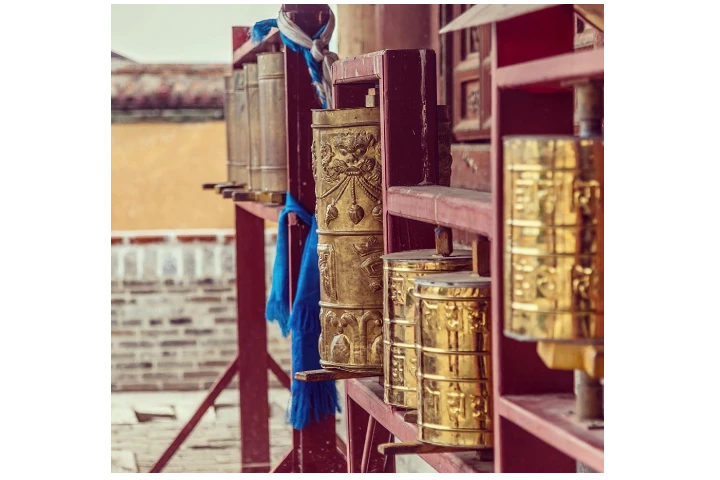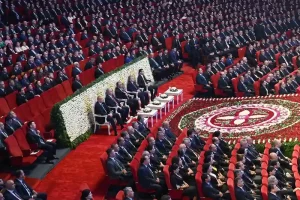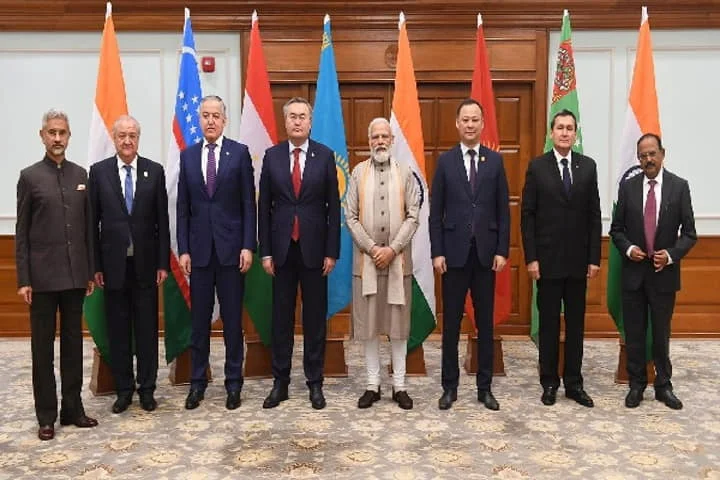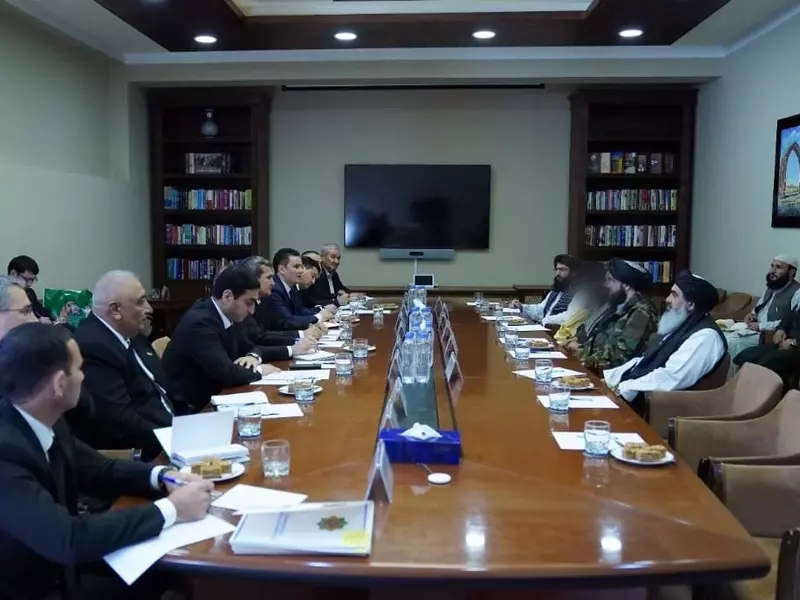President Ram Nath Kovind's recent highly engaged visit to Turkmenistan may hopefully infuse new life into bilateral relations. The country, which follows a “neutral” isolationist policy is, however, much like the rest of the Central Asian countries linked to India through shared historical and cultural ties that date back to antiquity. While much of the attention has been focused on the Turkmenistan Afghanistan Pakistan India (TAPI) gas pipeline and connectivity projects, Turkmenistan, with its rich history and an abundance of exotic sites dotting its landscape, is a tourist's delight. Unfortunately, there are few, if any, tourist links between our two countries. Yet, Indians would find it interesting to know that the country has an amazing Buddhist heritage.
Turkmenistan has traditionally been considered to be at the "cross-roads of history". It has been an important stop on the ancient Silk Route, and a melting pot of different cultures even before that. It was in the oasis of the Kopetdag plains and Kounya Ourgench, in the Sumbar Valley, the Amu-Darya and the Mourghab River besides Meshed-Misrian, that different historical eras met and different cultures merged.

President Ram Nath Kovind at the People's Memorial in Ashgabat, Turkmenistan, (Photo: @rashtrapatibhvn/Twitter)
Ties between the people of India and Turkmenistan can be traced to the remote past. In the pre-Christian era, a Buddhist community following the Mahayana School of Buddhism settled in this region. According to famed Uzbek-Georgian historian Eduard Rtvelarze, who passed away recently, the spread of Buddhism beyond ancient India's boundaries took place during Ashoka's time (circa 268 BC). An important role was played by the Parthian, the Kushana and the Sikh rulers of north-west India in the propagation of Buddhist and Indian culture in Central Asia.
There was a major influx of Buddhist missionaries into these territories during the Kushana period. The principal route of Buddhist expansion lay through Bactria and the western possessions of the Kushana empire, namely, through present-day Afghanistan and Balkh region.
I had the opportunity to visit the ancient city of Merv in Southern Turkmenistan, now an excavation site where each year throws up a new find giving a glimpse into the region's long and rich history. Turkmenistan shares a border with Afghanistan and, Merv – now barren land but once a thriving oasis – is situated near the Afghan border. Once upon a time it was the most important centre for Buddhist culture in Central Asia. The first Buddhist community settled here in the 4th Century AD, after the Sasanians wrested control of the former Kushana empire that comprised Afghanistan and northern India. Its missionaries traveled as far as China.
According to Chinese chronicles, Parthian Prince An-shi-Gao led a group of Buddhist missionaries to Turkmenistan in 148 AD. How interesting that a Parthian prince, the predecessor of the Muslims of Iran and Afghanistan, had carried the Buddha's message through Central Asia into China!
In Merv, archeologists have discovered an important Buddhist centre with temples and stupas at the site of the settlement of Gyaor Kala (Arabic for the Fortress of the Unbelievers). Another stupa was dug up by chance in Bairam Ali, the largest modern town near Merv. The stupas are testimony to the fact that not only did Buddhist culture spread within the frontiers of contemporary Turkmenistan, but it flourished! The first stupa found on the site is a monumental square building with a staircase in its northern part, a round tower and two pillars. The building dates from the second century AD. The second stupa is architecturally close to the first one but built four centuries later. This testifies to the expanding influence of Buddhist ideology.
According to Russian orientalist Margarita Vorobyova Desyatovskaya: "Archeological findings show that Indian and Buddhist culture had permeated every area of Central Asia, leaving direct evidence in the form of inscriptions and religious structures as well as profound traces in the cultural substrate of the local people. Buddhism only ceased to play an important role in the region towards the end of the 8th century AD, after the arrival of Islam. In the northern region of Central Asia (in Semirechya), Buddhist religious centres were evidently still functioning in the 10th century AD."
The stupas excavated in Merv are important because they are the western-most, extant Buddhist monument. The exquisitely painted Merv vase was extracted from a stupa. The tall jar with handles has details of scenes depicting life and death in black, red and blue. Some of the rarest Buddhist manuscript-texts of the Dhammapada–the main Buddhist scripture that forms part of the holy Buddhist cannon–inscribed on birch bark, was found inside it. The language is Sanskrit and the script is Brahmi–one of the oldest in the world. The manuscripts had been restored and at the time of my visit was housed at the Institute of Oriental Studies in St. Petersburg.
According to Vorobyova Desyatovskaya, the earliest manuscripts in Brahmi character known to science date from the Kushana period and they comprise, amongst others, some sheets of a manuscript found in Bairam-Ali, probably dating from the third-fourth century.
Buddhist manuscripts found in east Turkmenistan and central Asia remain the only original texts of the Buddhist canon known anywhere in the world. Scholars and historians believe that in India, almost none of these texts have been preserved. Some of the Buddhist writings and commentaries on them found in India are merely in the form of later copies. The inscription on monastic ceramicware, reliquaries kept in Buddhist religious buildings and the manuscripts are the main written sources for modern researchers to determine Buddhism's territorial expansion. These help determine the time when the propagation took place and tell them about principal Buddhist schools and centres which influenced the region's history and culture.
Another coveted find during the excavation of the Gaur Kala stupas has been the 75-cm-high head of the Buddha. It obviously belonged to a taller statue (about 3 to 3.5 metres) from the second and third centuries AD–about the same time the now destroyed Bamiyan Buddhas were created. This is supposed to be one of the first statues of the Buddha, which from this time onwards, became popular among the Buddhists of Central Asia and Afghanistan.
These constituted the Gandhara School of Art, which originated in north-west India comprising a large part of present-day Afghanistan (the lower Kabul valley) and the upper Indus, around Peshawar, then called Gandhara. Though, often, also called the Greco-Buddhist School of Art, it was influenced more by the art of the Roman Empire. Some of the Gandhara masters were believed to have been foreigners from Syria and Alexandria.
The school flourished mostly under the Kushanas, who were followers and patrons of Buddhism. The new devotional Buddhism demanded that images of worship and figures of the Buddha and Boddhisatvas be produced in large numbers. This art later spread all over Central Asia.
The head of the Buddha found in Merv was fashioned from clay and covered with three coats of paints–rose, yellow and red. The hair and eyes were painted navy blue, the lips bright red. Gilt remains were found in the hair. The face of the Buddha, fashioned in the traditions of the later Gandhara School, exudes serenity and majesty, the lips set in a slight smile. The head had undergone a long and painstaking restoration at the Archeological Centre of Turkmenistan's capital, Ashkhabad, and was then housed in the National Museum of Turkmenistan in Ashkhabad.
Other masterpieces of Buddhist art were unearthed at the excavation site in Merv. These were small statuettes of the Buddha, Boddhisatvas, a noble-woman and harpists. The most noteworthy was probably the decoration block chiseled in stone, depicting the Buddha in a meditative pose on a pedestal. The head was lost.
The pedestal was a complex composition, with a Buddha or Boddhisatva seated in the middle and flanked by two devotees. This stone carving is all the more unique because it is so small–21x18x5.8cm. This is considered to be a true masterpiece of the Gandhara school. Of great interest was the figure of another Buddha, chiseled in slate and gilt-coated.
The other treasure was the filigreed carving, which depicted a tiered tower with tiny figures of harpists at the base. All these relics had been lovingly and carefully preserved and kept in the National Museum of Turkmenistan. My Turkmen guide's face was almost bursting with pride as he showed me these treasures of an Islamic country's pre-Islamic past. And yet, just some time before my visit a few hundred kilometers across the border from Merv, the Taliban had blown up the Buddhas of Bamiyan, part of the same historical legacy as the Buddhist relics unearthed in Merv.
Amongst the many pacts signed between India and Turkmenistan during President Kovind's visit was one on culture. I hope this will in part focus on Turkmenistan's Buddhist history and through joint events will enable Indians to get a peek into the country's historical and cultural links with Turkmenistan.
Read More:
Is energy powerhouse Turkmenistan holding early elections to fight radicalism?




















